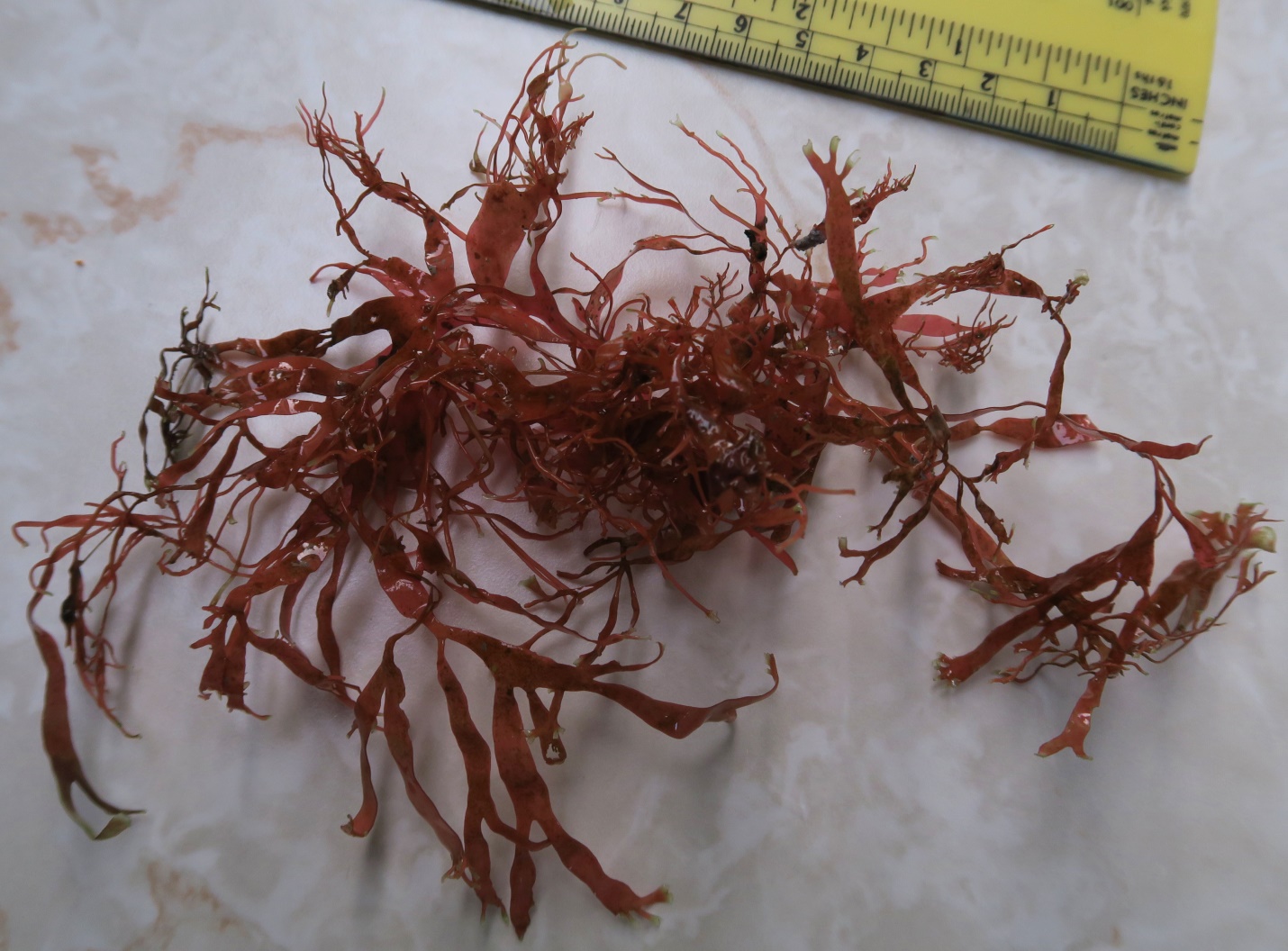
Farlowia mollis
Tattered Red Seaweed, Farlow’s Seaweed
Gonzales Bay, Juan de Fuca Strait, B.C., Canada
2 January 2023 – Collected at 3:30pm PST
Formal Interactions & Observations commenced 6 January 2022
Low tide 2.3 feet at 19:11pm PST (measured at Oak Bay Tidal Station)
Weather: Overcast, light variable winds, no precipitation, light chop, temperature 5 ˚C, relative humidity 82%.
Phase of Moon: Waxing Gibbous, 84.9% or 10 days past the new moon; (Previous Phase, First Quarter, 29 Dec 2022 at 5:20pm PST; Next Phase, Full Moon, 6 January 2023 at 3:07pm PST.)
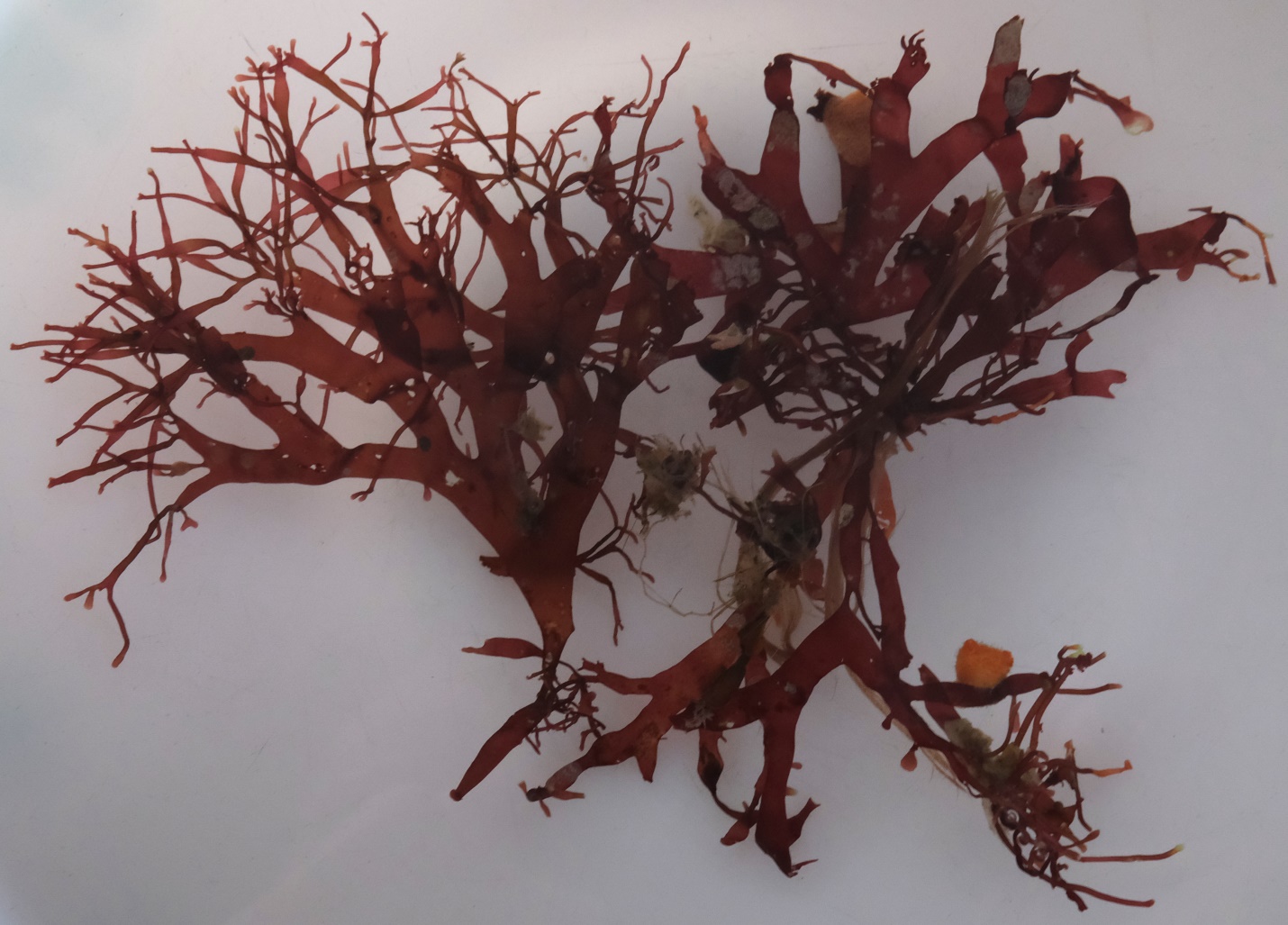
Figure 1: Gently lit in our observation basin, three different ‘specimens’ of Farlowia mollis are pictured here. The general look carries through the varied examples. Gonzales Bay, Juan de Fuca Strait, B.C., Canada. January 2, 2023. Photo ID 27493 ©Seaweedwhisperings.com
Washed Ashore:
Various specimens of this red alga were collected at a recent low-ish tide; one that followed our winter king tides (very high daytime tides and very low nighttime tides) and several low pressure systems that brought high winds and strong surf. Many species of macro algae were washed up in the drift and it was here that multiple Farlowia pieces were intermixed. We refreshed the collected seaweeds regularly with seawater until we could devote out attentions for a Whispering a few days later.
Person 1:
On the day of collection I had ABSOLUTELY no interest in interacting with this seaweed. It wasn’t a dislike or aversion to the seaweed, just a strong feeling of disinterest / indifference.
Although the common name, Tattered Red Seaweed, suggests unkempt messy appearance, I sense that it is DELIBERATELY different.
It has a hairdo, sort of “bedhead”, or maybe “afro”, but this is intentional, not due to neglect.
Lots of showiness, but outwardly lacks substance?
Maybe I think I can see through its façade, thus contributing to my lack of interest in interacting.
However, now that I’m sitting with Farlowia, I’m starting to see its inner beauty. There is depth to it, to the attention to detail. The thin branching extremities coming off the flattened blades are exquisite in design, carefully twisted and formed artistically.
The inner beauty is NOT hidden but overshadowed by the excessive decoration.
To the touch, the blades and terminal extensions feel just how it looks like they would. The extensions are strong and wiry, and the wider blades are just slightly rough.
I wonder if the showiness is designed to capture the attention of others.
But maybe Farlowia wants to be noticed for what it wants to be noticed for, NOT how others might want to interpret things. In other words, others might be unsure of how to interpret the “display”.
I notice with this Whispering that I seem to be trying to “justify” my impressions, rather than simply noting them.
I also keep going back to see if I expressed my impressions clearly.
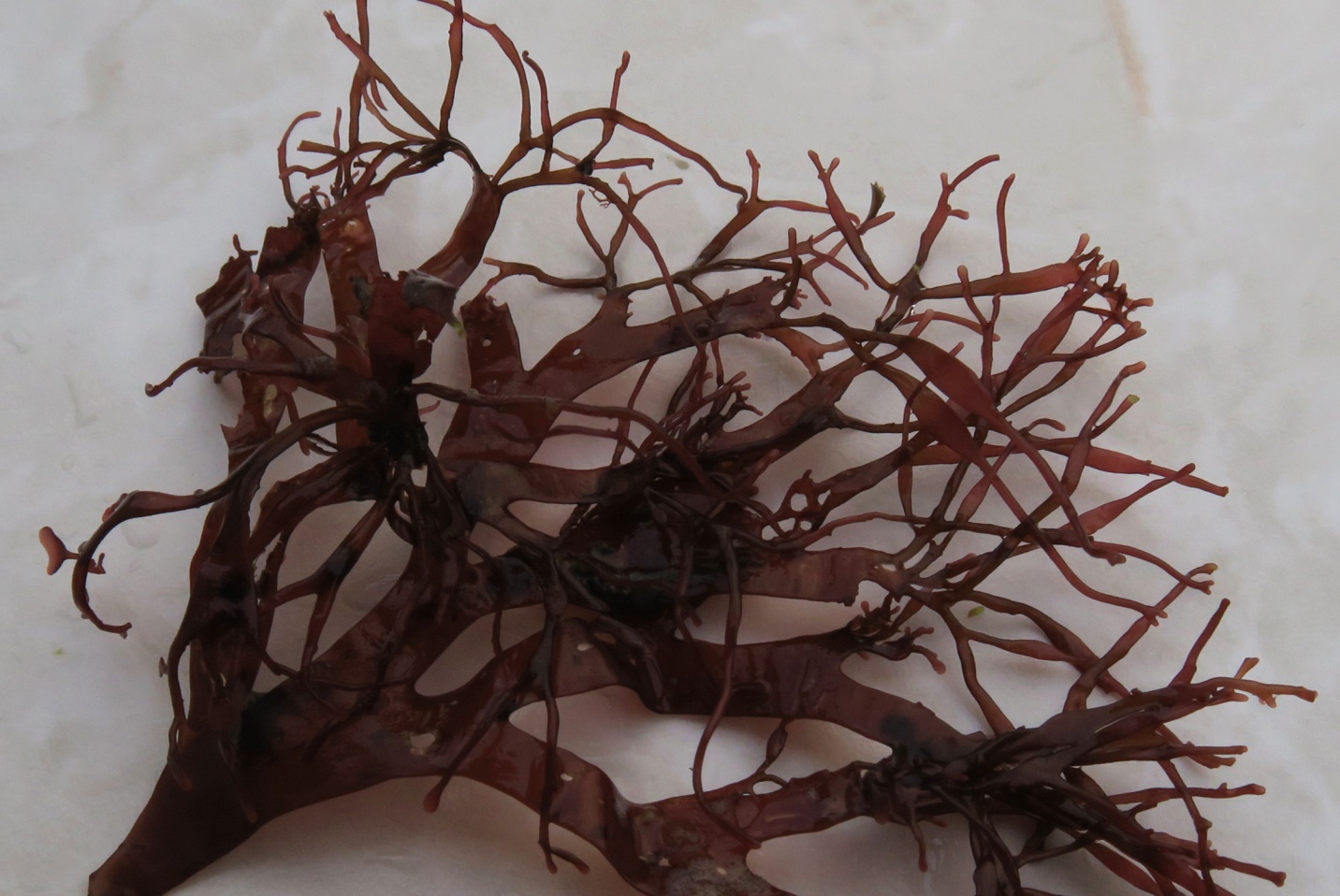
Figure 2: A closer view shows the strap-like and flattened oldest parts of the thallus in contrast with the wiry and more cylindrical newly growing tips. Gonzales Bay, Juan de Fuca Strait, B.C., Canada. January 2, 2023. Photo ID 27494 ©Seaweedwhisperings.com
Person 2:
You’re an odd one, Farlowia!
Different looking – and in a curious way, not a beautiful or handsome way.
I also note that all of the various specimens we have found of you are each of “a kind” but also have somewhat differing ways of express your morphology.
Messy, this is a word that comes to mind if I consider your look.
Messes also have been occurring right now for me as we started our Whispering.
First of all, I spilled seawater while I was pouring it into our observation basins. That mess needed to be cleaned up. Then, I tracked in debris with the specimen buckets, making a second mess on the floor. I’ve been doing similar actions multiple times this week (with other seaweed species) and for doing photography and I’ve had no messes, except with this one.
Even though Farlowia is not very large overall, it looks to me as though it’s “been around” for a bit – as if it has lived through many moons and the tides that change with it.
What gives this impression?
There are numerous other organisms growing on almost all of the numerous specimens we collected, so there was time for those other life forms to first find Farlowia and then grow in association with it.
Some parts of most specimens have tears or holes “eaten” in them, and some of the more terminal branches are torn, yet held in place by the encrusting other organisms.
Also your red color is not uniform, it almost seems aged such as oxidation will rust many metals, and also at some places, usually your tips, you have faded to a sickly green color.
None of this is fresh and new looking, but quite the opposite in fact.
Back to your shape, Farlowia. It is both rather odd and because of that, it is distinctive. Distinctive to those who would even stop and notice you, as you did NOT stand out in the mass of seaweed parts and pieces what were washed ashore on Gonzales Beach.
You were half-buried in sand and any bits of you that were showing were not “showy”.
This is partly because of your size; your thallus at its largest, broadest areas is really still quite narrow (and in some of the broadest areas it’s only 5 or maybe 6 mm wide). And then your terminal branchlets, they are even narrower and also often tipped with lean and long wiry branchlets only about 1 mm in circumference.
These tips are interesting. They stick out, protrude furthest from the base of the seaweed, and they also sometimes seem to intersect or cross over each other. Many are terminated with a “tear-drop” shaped flattened growth. They remind me, in a crude way, of the look of antennae of certain insects.
I felt thirsty and so went to pour myself a glass of water. When I went to the kitchen I came back with a rag to wipe a stain I’d noticed on the oilcloth work surface we’re using. This ‘stain’ was bothering me, even distracting me by its presence. Again, I’m cleaning up another mess associated with this seaweed!
Back to the antennae look – I need to quality that this is not quite the best descriptive companion, or for certain the emphasis should be on the word “crude” (constructed in a rudimentary or makeshift way), as no self-respecting insect I’ve ever observed would allow themselves to reach such an unkempt state.
It seems that this may be one of Farlowia’s key strategies in life, thought – it does NOT clean up its messes! It does not feel any urge to look a certain way or groom itself according to outside standards, and if what is going on is working well enough for it, then there is zero impulse to do anything more. It can even go beyond this lack of maintenance, I think, as I don’t see any indication on Farlowia’s part to do any repairs. If damage happens, well, then that damage persists untouched.
What else is Farlowia engaged with that it has so little care as regards maintenance or damage or messes or external grooming?
Maybe for Farlowia “self-respect” is achieved /measured in a totally different manner.
I paused, took in once more the feel of the various seaweed bits and pieces we are working with.
Are you goofing around in life, Farlowia?
Playing at things that captivate and engage you internally?
Along with that are you simply notably lazy? Unwilling to put effort into anything at all except for your own bare necessities and personal entertainments and or desires?
And do you, Farley (I now found this nickname for Farlowia mollis) sometimes receive or take a helping hand whenever it is offered? Do you welcome gifts or aid from wherever they may come?
I think the answer is once more, yes, just so long as the help or aid is exactly fitting to what you want at that particular point in time.
It’s odd that your external look can be so messy, but your internal desires, they are it seems quite precise.
And time, the particular point in time..., I think Farley thinks mainly in the immediate and present tense IF they are interacting with others. They don’t look forward and see that saying “yes” to a certain type of assistance now will be very useful down the road – the future is just not in their view for consideration.
The rest of the time, though, I think Farlowia as pretty “loose” in their relationship with time. Unconcerned with punctuality or any looming deadlines. When engaged internally, I think Farley can be quite lost as regards to time and other agreed “realities” that others will heed. I think this can cause some discord or trouble as Tattered Red Seaweed will rarely “measure up” the way others may expect it to.
Others may quickly judge Farley as being loose and lazy and not reliable in any conventional way. So I think Farlowia is quickly dismissed, passed by or overlooked for others more typical to interact with.
I also think others could find Farlowia to be an energy drain. Tattered Red’s laziness means it would take and receive readily but also that it seldom turns such gestures. Those who enjoy both “give & take” in their relations would quickly learn that Farlowia is not inclined to this at all.
Resentment and indignation or at the very least disappointment and disillusionment could often arise. These maybe are another expression of the “messes” that accumulate around Farley.
And with the external messes, there seems to be no drive to do any clean up or maintenance – none whatsoever. This reminds me of the weathered and aged totem poles I’ve seen on the British Columbia coast. Some persons would ask, “Why don’t you touch up the paint?”, or “Why aren’t the wrens stopped from building their nest near the base?” Some would say, “Fix it up now before it decays.” But the wishes and priorities of those who created and erected the poles do not fall along these lines; instead they have the concern that that the totems be permitted to age and decay naturally.

Figure 3 (left): This fragment shows a ‘damaged’ section on the flattened blade and the rather whimsical looking young wiry projections. Many of these forms were reminiscent of Southwest rock art that seems to depict tall and broad shouldered ‘aliens’ wearing various fanciful head pieces. Figure 3 (right): This shows another blade with jagged damaged areas. No repair seems to be undertaken and the thallus continues to thrive. Gonzales Bay, Juan de Fuca Strait, B.C., Canada. January 6, 2023. Photo ID 27495 ©Seaweedwhisperings.com
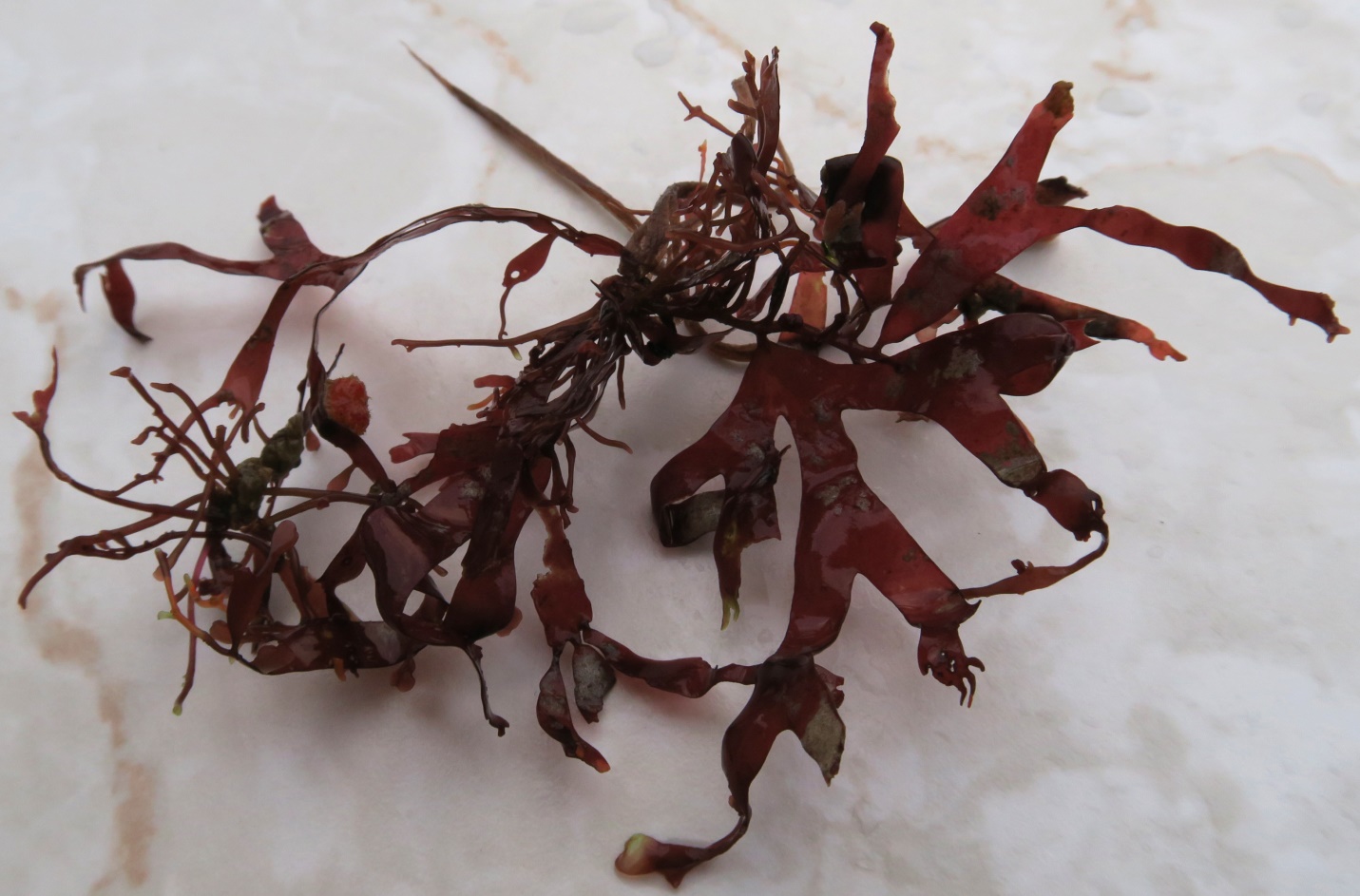
Figure 4: This cluster of Tattered Red Seaweed looks, well, exactly like the name declares. Bryozoans, tunicates and other marine organisms and even one or two egg casings all are making their home on this seaweed, too. Gonzales Bay, Juan de Fuca Strait, B.C., Canada. January 6, 2023. Photo ID 27496 ©Seaweedwhisperings.com
Day 2, Further Observations and Impressions:
Person 1:
Moving into ethereal.
Extensions (at tips) resemble fanciful space creatures, similar to some Southwest Rock Art.
Hallucinating, daydreaming, dreaming...
Not present / oblivious to material world “norms”. Actually living in another world.
Sudden mood changes upon having to face the reality of the material world. Happens when coming out of the ‘dream’ state.
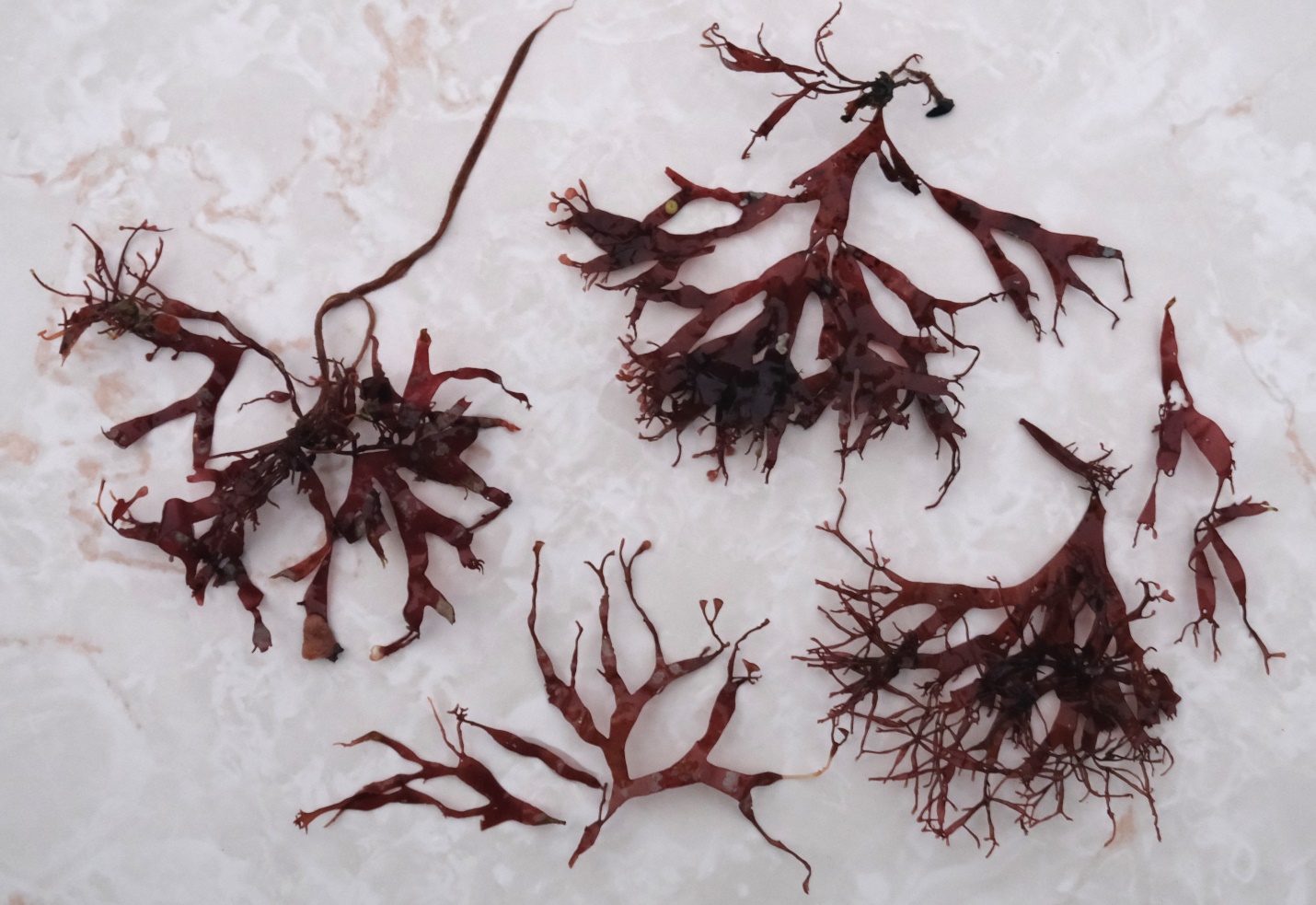
Figure 5: This collection depicts some of the numerous “looks” of Farlowia mollis. Gonzales Bay, Juan de Fuca Strait, B.C., Canada. January 2, 2023. Photo ID 27497 ©Seaweedwhisperings.com
Person 2:
Messy – can this also lead to sloppy and careless behavior?
An incident yesterday occurred that had me pondering this. I was working on various computer files and had multiple ones open of varying types. Then I thought I’d check something on the internet, so turned on my Wi-Fi connection and just as I had selected a website to visit, I noticed that the letter carrier was delivering some mail at the box near my window. I started to get up to retrieve the mail when my computer erupted with an pop-up message and alarming audio message declaring that my computer had been “locked up” and warning that I not power off or shut down my computer, etcetera, etcetera.
It seems that I was a randomly targeted potential “victim” of a common hoax or scam attempt. Of course I was advised by a supposedly “official-looking” warning message to call a specific phone number for “help” – help that of course was for a non-existent problem and that would cost many dollars to fix.
This whole incident felt related to Farley’s way of being.
It can look like a messy ball of tanged branches, Farlowia; also that it is reaching for or doing many things at once but also not with much care or clarity or organization. Visually it looks a bit dirty, sloppy and even sickly colored with the greenish discolored tips.
And what can that sloppy behavior lead to? In this instance it was exposure to being cheated, deceived, preyed upon, taken advantage of, and so on.
Does Farley suffer such things and also almost literally ignore them, take them in their stride?
Certainly many of the specimens have holes or bites taken out of them and yet the overall thalli continue to grow, unharmed in any major or visible way.
And does the flip-side occur, too?
Does Farlowia perpetrate some types of actions that are essentially cheating others or some other type of thievery?
Can Farlowia be disorganized and messy enough that by its very nature it draws resources to it to fill in the obvious neediness or deficit it presents?
Deficit – this word resonates. It also is somewhat close to the word “deceit”, and the definition of deficit, “an excess of expenditure or liabilities over income or assets in a given period” or “the amount by which something, especially a sum of money, is too small” is notable here.
It seems that Farley is well acquainted with this “deficit” concept – more is spent than is created or earned. AND the definition, at least in bookkeeping terms, is relevant for “a given period” of time.
I wondered then, does Farley at other TIMES make up for this?
Or is it in other WAYS that Farley makes up for it – so the equation cannot be measured in a single paradigm. I think this may be very much the case. And just as strange and out of context as the otherworldly space figures look on the Southwest Rock Art, well, they can parallel just how very different from the “norm” most Farlowia mollis contributory efforts may be manifest.
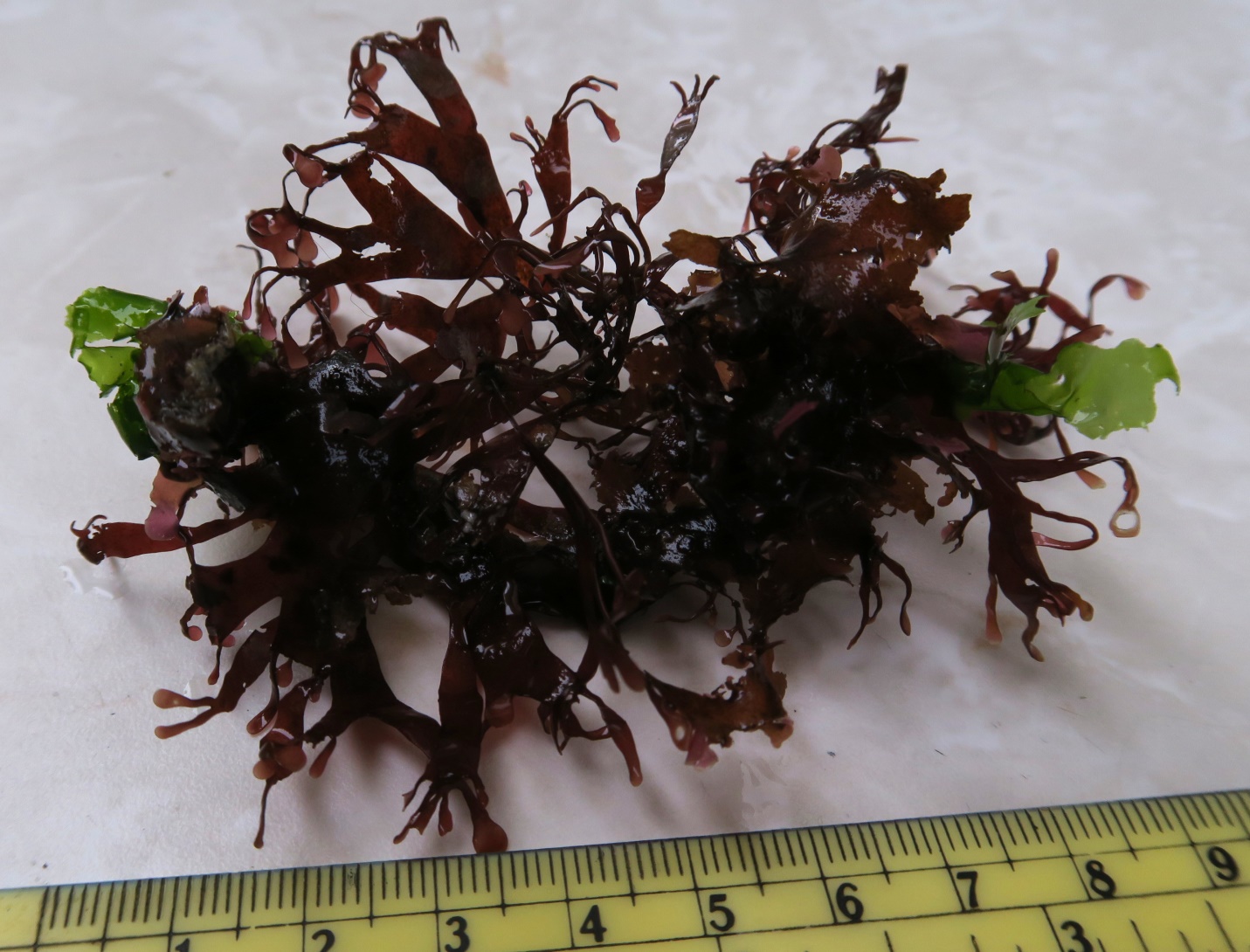
Figure 6: This messy looking “ball” of tattered seaweed was found washed ashore almost exactly two years prior to our Whispering along a section of the same coastline. It has some small pieces of green Ulva sp. seaweed growing epiphytically on it. Gonzales Bay, Juan de Fuca Strait, B.C., Canada. January 4, 2021. Photo ID 27498 ©Seaweedwhisperings.com
Biology & Natural History Information:
Description:
Thallus of this red alga is bright to very dark (almost blackish) red, narrow and strap-like (to 1.5 cm wide) and in its largest parts flattened; when branching occurs it is usually approximately opposite from the main axis. Small lateral branchlets arise from both main axes and branches and their irregular positioning combines to give the seaweed a somewhat messy or ragged appearance. Faint midribs and veins are not always evident. The extremities are regions of most recent growth, and here the long tips are thin and cylindrical in contrast to the flattened older parts of the thalli. This species can form messy or tattered looking branched clumps that grow up to 20 cm tall.
Habitat:
Tattered Red Seaweed grows on low intertidal rock, often partially buried in sand (and can withstand being buried in sand), and tide pools of the mid-intertidal. It is found in exposed to semi-protected locations along outer coastlines.
Distribution:
Pacific coastline of North America from central Alaska to Baja California, Mexico; and along Japan, Russia and the Kuril Islands.
Remarks:
The specimens we observed and interacted with were all the gamete-producing phase; this phase alternates with a crustose, spore producing phase that lives sub tidally.
Farlow’s Seaweed is named in honor of William Gilson Farlow, a professor of cryptogamic botany at Harvard University (a cryptogam is a plant or plant-like organism that reproduces by spores, so without flowers or seeds); Farlow published on fungi, algae and plant diseases.
Farlowia mollis has been researched for the unusual bio-chemicals it produces, and as a source of various pharmaceuticals including those that have antiviral properties.
Classification:
Phylum: Rhodophyta
Class: Florideophyceae
Order: Gigartinales
Family: Dumontiaceae
Genus: Farlowia
Species: Farlowia mollis (Harvey & Bailey) Farlow & Setchell 1901
Former name(s): Gigartina mollis Harvery & Bailey 1851; Mammillaria mollis (Harvey & Bailey) Kuntze 1891; Farlowia crassa J.Agardh 1876.
Figure 7: Yet one more example of the variations of Farlowia mollis; this one depicts a brighter red individual. Gonzales Bay, Juan de Fuca Strait, B.C., Canada. January 4, 2021. Photo ID 27499 ©Seaweedwhisperings.com
![]()
